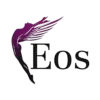Table of Contents
ToggleThe telecommunications industry in Japan stands as a global benchmark for innovation, reliability, and technological advancement. With one of the most mature telecom infrastructures in the world, Japan’s telecom sector is a pillar of its digital economy and a driver of future-ready transformation. From the early adoption of mobile technology to its ambitious plans for 6G, Japan continues to push the boundaries of what’s possible in communication. As the demand for high-speed connectivity and intelligent networks grows, the sector’s evolution is critical to the nation’s competitiveness in a digitally interconnected world.
Let’s explore the structure, key players, advancements, and challenges within the industry.
Industry Structure and Key Players
The telecommunications industry in Japan is defined by a competitive landscape led by three dominant players: NTT DoCoMo, KDDI (au), and SoftBank. These companies control the vast majority of the market and offer a full suite of services including mobile communications, broadband internet, fixed-line telephony, and enterprise solutions. Their extensive infrastructure and deep experience have positioned them as pillars of the country’s digital economy.
Rakuten Mobile, a relative newcomer, has made significant waves by introducing an innovative cloud-native network and highly competitive pricing. By adopting open network architectures and offering aggressive data plans, Rakuten has challenged the status quo and compelled larger carriers to re-evaluate their strategies. This disruption has not only increased consumer choice but also pushed the Japan telecom market to become even more dynamic.
The Japanese government has played a proactive role in shaping this competitive environment. Through a series of deregulation initiatives, it has sought to reduce barriers to entry, lower interconnection fees, and make pricing more transparent. These measures have fostered greater competition, enhanced service quality, and helped bring down consumer costs, ensuring that innovation and affordability remain at the forefront of the Japan telecom sector’s development.
Employment in the Japan Telecom Sector
The Japan telecom industry employs over 300,000 people across various roles, including engineering, customer service, software development, and network operations. These jobs are increasingly shifting toward higher-skilled roles as automation and AI adoption reduce the need for manual processes.
Telecom companies are investing in upskilling programs to prepare their workforce for future demands. There is a growing emphasis on digital skills, cybersecurity expertise, and AI-related competencies. Moreover, as the industry expands into smart city development and 6G research, new job categories are emerging at the intersection of telecom, IT, and data science.
Read more: The Indonesia Tech Industry: Southeast Asia’s Digital Powerhouse in the Making
Advancements in Technology
Japan has consistently been at the forefront of telecommunications technology. From pioneering mobile internet in the early 2000s to driving innovation in 5G and beyond, the nation’s telecom sector remains a cornerstone of technological development. The integration of advanced technologies has significantly improved the quality of services and has enabled the rise of new industries and use cases.
Telecommunications providers in Japan are now focusing on integrating artificial intelligence, IoT, and next-generation connectivity to enhance efficiency and service delivery. These advancements not only strengthen the competitive positioning of domestic companies but also influence global telecom trends. With strong support from the government and a culture of continuous improvement, Japan continues to lead the charge in high-tech telecommunications.
5G and Its Transformative Impact
Japan was one of the first countries to roll out 5G networks nationwide, laying the groundwork for a new era of connectivity. The high-speed, low-latency, and high-capacity features of 5G technology have enabled revolutionary changes across various sectors. Telecom companies like NTT DoCoMo, KDDI, and SoftBank have rapidly expanded their 5G networks, with Rakuten Mobile leveraging its open network architecture to deliver competitive services.
The transformative nature of 5G extends far beyond faster smartphones. It has created a platform for new services and digital experiences that require real-time data processing and seamless connectivity. This includes applications in smart cities, telemedicine, and autonomous transportation—all of which are becoming increasingly feasible thanks to Japan’s robust 5G infrastructure.
Smart Cities
The concept of smart cities is gaining significant traction in Japan, and the telecommunications industry is at the core of this evolution. With the deployment of 5G, cities can now leverage real-time data for smarter traffic systems, energy-efficient buildings, and predictive maintenance of public infrastructure. Telecom providers play a central role by offering the necessary network reliability and bandwidth for these initiatives to succeed.
In cities like Tokyo and Fukuoka, pilot programs are already demonstrating how integrated data systems can reduce congestion, lower energy usage, and improve overall urban planning. As these initiatives expand, the telecommunications industry in Japan is poised to help redefine what urban living looks like in the 21st century.
Telemedicine
Telemedicine has rapidly evolved from a niche service into a vital component of Japan’s healthcare system. With an ageing population and rural areas lacking medical resources, 5G-powered telemedicine offers a practical solution. High-speed, stable connections allow for real-time consultations, remote diagnostics, and even robotic surgeries.
Japanese telecom companies are partnering with hospitals and tech firms to roll out advanced telehealth platforms. These solutions not only address access issues but also reduce the burden on hospitals and clinics. The seamless integration of medical devices, wearables, and mobile networks is revolutionizing how healthcare is delivered in Japan.
Autonomous Vehicles
Autonomous vehicle development in Japan has gained momentum, with 5G networks acting as a critical enabler. These vehicles require real-time communication with traffic systems, cloud servers, and each other to operate safely and efficiently. The ultra-low latency and high reliability of 5G make it possible for cars to react to changing conditions almost instantaneously.
Telecom companies are actively collaborating with automotive manufacturers to pilot autonomous transport systems in both urban and rural areas. These initiatives align with the government’s smart mobility strategy and could lead to safer roads, reduced congestion, and greater mobility for elderly populations.
Internet of Things (IoT) Applications
The Internet of Things (IoT) is flourishing in Japan, with telecom providers driving its rapid adoption across multiple industries. From smart homes to industrial automation, IoT applications are increasingly becoming part of daily life. The foundation of this growth lies in the country’s robust telecommunications infrastructure and early deployment of 5G.
Japan’s IoT ecosystem benefits from tight integration between hardware manufacturers, software developers, and telecom operators. As devices become more interconnected, the data generated is helping businesses optimize operations, reduce costs, and create new value chains. The role of Japan telecom firms is central in maintaining secure and scalable IoT networks.
Manufacturing
In manufacturing, IoT sensors are transforming production lines into smart factories. These sensors track machinery performance in real-time, enabling predictive maintenance and minimizing downtime. Japan’s renowned precision manufacturing sector is embracing these technologies to maintain its competitive edge. Telecom providers supply the necessary connectivity and data solutions that allow factories to integrate these systems seamlessly. The result is increased productivity, better quality control, and more responsive supply chains, hallmarks of Industry 4.0 that Japan is keen to lead.
Healthcare
Healthcare providers in Japan are using IoT to improve patient care and reduce medical costs. Wearable devices and remote monitoring tools collect real-time health data, allowing doctors to make timely interventions. These technologies are especially valuable in managing chronic conditions and supporting ageing populations. Telecommunications companies are facilitating the secure transmission of sensitive medical data and ensuring that healthcare systems remain connected and operational. Their role extends beyond infrastructure to include strategic partnerships with health tech startups and research institutions.
Agriculture
Agriculture in Japan is undergoing a technological renaissance, with IoT-based solutions enabling smarter, more sustainable farming practices. Sensors monitor soil moisture, weather conditions, and crop health, allowing farmers to make data-driven decisions. This has led to more efficient irrigation, reduced pesticide use, and higher yields.
Telecom companies are providing the connectivity that makes these systems viable even in remote rural areas. By supporting agricultural innovation, the telecommunications industry in Japan is contributing to food security and rural revitalization.
Artificial Intelligence (AI) in Telecommunications
AI is transforming how telecom companies operate in Japan. By analyzing massive volumes of data, AI can automate and optimize processes that once required manual oversight. This includes everything from customer service to network management and fraud detection.
With the pressure to reduce operational costs while maintaining high service standards, Japanese telecom providers are integrating AI across their organizations. These technologies are not only improving efficiency but also enhancing the customer experience through more personalized and proactive service delivery.
Predictive Maintenance
Predictive maintenance is a prime example of AI’s impact on telecommunications infrastructure. By analyzing patterns in network data, AI algorithms can predict equipment failures before they happen. This allows for preemptive repairs and reduces the risk of service outages.
Japanese telecom firms have invested heavily in these systems to ensure reliability, particularly in densely populated urban areas where downtime can be costly. As networks become more complex, predictive maintenance will play an even more critical role in maintaining performance.
Customer Support
AI-powered chatbots and virtual assistants are now a staple of customer service in Japan’s telecom sector. These tools handle routine inquiries, resolve issues faster, and free up human agents to focus on more complex problems. As natural language processing improves, customer interactions are becoming more seamless and intuitive.
By automating customer service channels, telecom companies can operate more efficiently and respond to user needs 24/7. This shift reflects broader trends in digital customer engagement and aligns with Japan’s reputation for service excellence.
Network Optimization
AI is also being deployed to optimize network performance in real-time. Algorithms continuously analyze traffic patterns and adjust resource allocation to prevent congestion and ensure consistent service quality. This dynamic approach enables networks to handle increasing demand without requiring constant manual intervention. In Japan, where user expectations for speed and reliability are high, network optimization through AI is essential. It also supports the rollout of advanced services such as cloud gaming, virtual reality, and autonomous systems, which depend on high-performance connectivity.
Read more: The Automobile Industry in Japan: A Pillar of Innovation and Global Leadership
Pioneering 6G Development
While 5G is still in the rollout phase, Japan is already investing in the next generation: 6G. The goal is to deliver speeds up to 10 times faster than 5G, with even lower latency and the ability to support immersive, AI-integrated experiences. This early focus underscores Japan’s ambition to remain a global leader in telecom innovation.
In 2024, a consortium made up of NTT DoCoMo, NTT Corporation, NEC Corporation, and Fujitsu unveiled the world’s first 6G device. This landmark achievement demonstrated Japan’s technological leadership and provided a tangible glimpse into the future of ultra-fast, intelligent wireless communication.
Research into 6G is being coordinated by the Ministry of Internal Affairs and Communications (MIC), and the ecosystem includes major tech firms and universities working in tandem. With early device prototypes already in testing, Japan is positioning itself at the forefront of the next generation of mobile technology—an edge that could have profound economic and geopolitical implications.
Terahertz Communications
A key element of 6G will be terahertz frequency communications, which can provide data transmission rates far beyond what is possible today. This leap in speed will open the door to new use cases such as high-definition virtual reality, real-time digital twins, and immersive experiences that were previously limited by bandwidth constraints.
Japanese researchers are exploring how to overcome the technical challenges associated with terahertz waves, including signal attenuation and hardware limitations. The successful implementation of terahertz technology will be critical to the realization of 6G’s full potential.
Integration of AI and IoT
6G will not just be about speed—it will be about intelligence. Japan’s vision for 6G includes the seamless integration of AI and IoT, enabling hyper-connected environments where devices can autonomously interact and make decisions. This will transform industries such as logistics, healthcare, and public safety. Telecom providers are already working on frameworks to support these next-generation networks, including edge computing and distributed AI. These efforts are laying the groundwork for a future where connectivity is not only faster but smarter.
Holographic Communication
Holographic communication is one of the most futuristic applications of 6G being explored in Japan. The ability to transmit 3D holograms in real time could revolutionize fields like remote collaboration, education, and entertainment. This level of immersive communication requires extremely high bandwidth and minimal latency—both of which 6G promises to deliver. Companies and research institutions in Japan are developing prototype systems and use cases for holographic applications. As this technology matures, it could redefine human interaction in a digital world.
Digital Transformation and Sustainability
The Japan telecom sector is central to the country’s digital transformation agenda. Providers are investing heavily in cloud infrastructure, data centers, and cybersecurity to meet the increasing demand for digital services. These investments support a wide range of industries undergoing digital transformation, from manufacturing to retail and education.
Sustainability is also a growing focus. Telecom companies are adopting green energy solutions, optimizing energy consumption in data centers, and setting ambitious carbon neutrality targets. These efforts align with Japan’s national goals for reducing greenhouse gas emissions and transitioning to a more sustainable economy.
Challenges and Opportunities
Despite its advancements, the telecommunications industry in Japan faces challenges. High infrastructure costs, cybersecurity threats, and maintaining service quality in rural and ageing areas remain pressing issues. Additionally, there is a growing need to balance competition with profitability, as price wars could impact long-term investments in innovation. However, these challenges also present opportunities. The expansion of smart cities, the rise of telemedicine, and increased reliance on digital services due to remote work trends are driving new demand. The government’s initiatives to enhance rural connectivity also create growth prospects for providers.
Read more: The Benefits of Hiring a Japan PEO
Conclusion
The telecommunications industry in Japan is a testament to the country’s technological prowess and commitment to innovation. As the sector continues to evolve, it will play a pivotal role in shaping Japan’s digital future. By addressing challenges and leveraging opportunities, Japan’s telecom companies can maintain their position as global leaders in the industry.
Eos has over 15 years of experience serving the Japanese market. Contact us. Check our services here or book a free consultation now.
Photo by Jezael Melgoza on Unsplash







